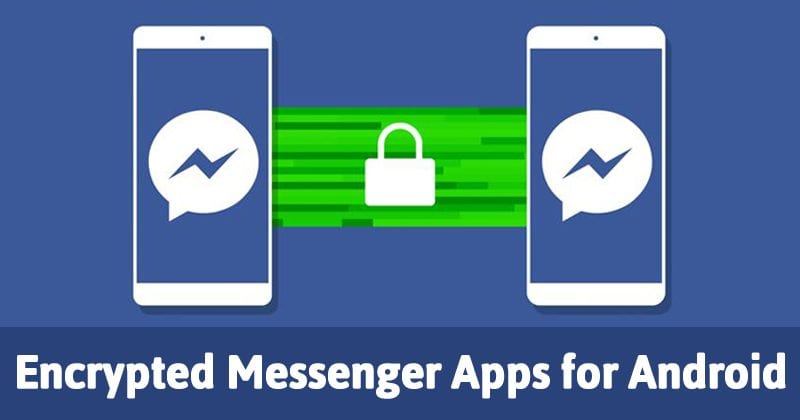
How Encrypted Messaging Apps Conquered the World
How encrypted messaging apps conquered the world is a story of shifting societal priorities and technological leaps. We’ve all felt the sting of a data breach, the creeping unease of constant surveillance. This isn’t just about tech; it’s about our fundamental right to privacy in an increasingly interconnected world. The rise of apps like Signal, WhatsApp (with end-to-end encryption), and Telegram reflects a global yearning for secure communication, a desire to reclaim control over our digital lives.
This journey from whispered secrets to encrypted conversations is fascinating. We’ll explore the key technological advancements that made secure messaging possible, the features that drive user adoption, and the significant impact these apps have had on social movements, political discourse, and even the methods used by law enforcement. We’ll also delve into the ongoing challenges and the exciting future possibilities of encrypted communication, including the ethical considerations that must be addressed as we move forward.
The Rise of Privacy Concerns
The digital age, while offering unprecedented connectivity, has simultaneously exposed a stark reality: our personal data is constantly collected, analyzed, and potentially misused. This growing awareness of data privacy breaches and mass surveillance has been a key driver in the global adoption of encrypted messaging apps. People are increasingly demanding more control over their personal information, leading to a significant shift in how we communicate online.The erosion of trust in large tech companies and governments played a pivotal role in this shift.
Revelations of widespread surveillance programs and data breaches have shaken public confidence, prompting many to seek alternative, more secure communication methods.
The Impact of Whistleblowers
Edward Snowden’s 2013 revelations about the NSA’s mass surveillance programs were a watershed moment. His disclosures, detailing the extent of government surveillance on private citizens, shocked the world and ignited a global debate about privacy rights and the balance between security and freedom. Similar whistleblowers, though perhaps not as widely known, have further illuminated the scale of data collection and the potential for misuse, fueling public distrust and the demand for more secure communication tools.
The impact extends beyond the initial shock; the ongoing discussion sparked by these revelations continues to shape public opinion and drive the adoption of privacy-focused technologies.
High-Profile Data Breaches, How encrypted messaging apps conquered the world
Numerous high-profile data breaches have underscored the vulnerability of personal information in the digital realm. The Yahoo! data breaches, affecting billions of user accounts, exposed vast quantities of personal data, including passwords and email addresses. The Cambridge Analytica scandal, involving the harvesting of Facebook user data for political purposes, highlighted the potential for misuse of personal information. These and other similar incidents have served as stark reminders of the risks associated with entrusting personal data to large corporations and have significantly contributed to the public’s demand for greater privacy and security.
Comparison of Privacy Policies
The following table compares the privacy policies of major social media platforms with those of encrypted messaging apps. It’s crucial to note that privacy policies are complex and subject to change; this table provides a general overview and should not be considered exhaustive legal advice.
| Feature | Signal | |||
|---|---|---|---|---|
| End-to-End Encryption | No (for most messaging) | No | Yes | Yes (by default) |
| Data Collection | Extensive | Extensive | Minimal | Moderate |
| Data Sharing | With third-party advertisers and partners | With third-party advertisers and partners | Limited, primarily for service improvements | With Facebook (parent company) |
| Transparency | Complex and lengthy privacy policy | Complex and lengthy privacy policy | Relatively transparent | Moderate transparency |
Technological Advancements Enabling Encryption

The rise of encrypted messaging apps wasn’t just a matter of societal demand; it was fueled by significant leaps in cryptography and the increasing accessibility of these powerful tools. The evolution of encryption, from relatively simple methods to the sophisticated end-to-end encryption we see today, is a fascinating story of technological progress that has profoundly impacted our digital lives.
This progress has made strong encryption not just a theoretical possibility for governments and large corporations, but a readily available tool for everyday users.The development and widespread adoption of strong encryption algorithms have been crucial. Early encryption methods were often easily broken, but advancements in computational power and mathematical understanding led to the creation of significantly more robust algorithms.
The shift from symmetric-key cryptography (where both sender and receiver use the same key) to asymmetric-key cryptography (using separate public and private keys) was a major breakthrough, enabling secure communication even without prior key exchange. This, combined with the development of digital signatures, allowed for verification of message authenticity and integrity.
The rise of encrypted messaging apps is a fascinating story; privacy concerns drove users to seek secure communication, leading to their global dominance. This trend highlights the power of user demand, a factor that also explains why, as reported in this insightful article on chinese firms will keep going global , Chinese tech companies are increasingly successful internationally.
Ultimately, the success of encrypted messaging apps shows how a focus on user needs can fuel global expansion, mirroring the ambition of many Chinese firms.
End-to-End Encryption and its Significance
End-to-end encryption (E2EE) is the cornerstone of secure messaging. In E2EE, only the communicating parties—the sender and the recipient—can read the messages. The messaging app itself, or any intermediary server, cannot decrypt and access the message content. This is a critical difference from other systems where messages might be stored unencrypted on servers, potentially vulnerable to interception or unauthorized access.
The significance of E2EE lies in its ability to protect sensitive information from unauthorized access, even by the app provider itself, fostering trust and privacy in digital communication. This has been particularly important in regions with strict censorship or surveillance.
It’s amazing how encrypted messaging apps like WhatsApp and Telegram have become global communication staples, offering privacy in a digital world. This rise in secure communication is particularly relevant as Indonesia, a nation with a massive online presence, is at a crossroads, as highlighted in this insightful article: indonesia is at a crossroads. The choices Indonesia makes regarding digital privacy and security will likely influence how encrypted messaging continues to shape global communication trends in the years to come.
Open-Source Encryption Protocols in Messaging Apps
Several open-source encryption protocols are the backbone of many popular encrypted messaging apps. Open-source nature is important because it allows independent security researchers to scrutinize the code, identify vulnerabilities, and improve the security of these protocols. Transparency and community review are crucial for building trust in the security of these systems. Signal Protocol, for example, is used in Signal, WhatsApp, and other apps.
The rise of encrypted messaging apps is fascinating; privacy concerns pushed users towards secure platforms, a trend amplified by geopolitical events. Reading Christian Whiton’s article on Xi Jinping and Hong Kong’s potential win, christian whiton chinas xi looks increasingly dazed and confused could hong kong win this showdown , highlights how governments struggle to maintain control in the face of widespread encrypted communication.
Ultimately, this battle for control underscores the enduring power and global reach of secure messaging apps.
It’s based on established cryptographic techniques and has undergone extensive review by experts. Another example is the OTR (Off-the-Record) protocol, which provides similar levels of security but with a different approach.
Illustrative Diagram of End-to-End Encryption
Imagine two people, Alice and Bob, wanting to communicate securely. Alice composes a message. Before sending it, she encrypts the message using Bob’s public key. Only Bob’s corresponding private key can decrypt it. The encrypted message is then transmitted across the network.
Any intermediary, such as a messaging server, receives the encrypted message but cannot decrypt it because it lacks the private key. Bob receives the encrypted message and decrypts it using his private key, revealing Alice’s original message. The entire process ensures only Alice and Bob can access the message’s contents, maintaining confidentiality. This is visually represented by a simple diagram:[Description of Diagram: A rectangle representing Alice’s device contains “Message” and “Bob’s Public Key”.
An arrow points to a cloud-shaped rectangle representing the internet. Inside the cloud, the message is depicted as an unreadable jumble. Another arrow points to a rectangle representing Bob’s device. This rectangle contains “Encrypted Message” and “Bob’s Private Key”. An arrow connects “Encrypted Message” to “Decrypted Message” within Bob’s device.
The diagram clearly shows the encryption and decryption process, highlighting the role of public and private keys and the inability of the intermediary to access the message content.]
Challenges and Limitations of Encrypted Messaging
The seemingly impenetrable shield of end-to-end encryption, while offering unprecedented privacy, isn’t without its flaws. The very features designed to protect users also present significant hurdles for developers, law enforcement, and even the users themselves. Balancing security and usability remains a constant challenge, leading to a complex landscape of trade-offs and ongoing debates.The development and maintenance of secure encrypted messaging apps are incredibly complex and resource-intensive.
This involves constant vigilance against evolving threats, the need for highly skilled security experts, and the continuous refinement of cryptographic algorithms to withstand increasingly sophisticated attacks. Furthermore, user error remains a significant vulnerability. A single weak password or a compromised device can completely negate the benefits of even the most robust encryption.
Maintaining Security and Privacy
Developers face a constant arms race against hackers and state-sponsored actors. New vulnerabilities are discovered regularly, requiring swift and decisive patching. This requires significant investment in security auditing, penetration testing, and ongoing research into cutting-edge cryptographic techniques. Additionally, ensuring user privacy requires careful consideration of metadata, which, even without access to the message content, can reveal sensitive information about communication patterns and relationships.
The challenge lies in minimizing metadata collection while maintaining the functionality and usability of the app.
Potential for Misuse in Illegal Activities
The inherent privacy afforded by encrypted messaging makes it attractive to individuals engaged in illegal activities, from drug trafficking and money laundering to terrorist communication and child exploitation. While encryption itself isn’t inherently malicious, its potential for misuse is a significant concern for law enforcement agencies worldwide. The difficulty in accessing encrypted communications hinders investigations and prosecutions, potentially leading to a decrease in public safety.
This has led to ongoing debates about balancing individual privacy rights with the need for effective law enforcement. For instance, the use of encrypted platforms by organized crime groups has been well documented, highlighting the need for careful consideration of the potential negative consequences of strong encryption.
Government Access to Encrypted Communications
The debate surrounding government access to encrypted communications is a central point of contention. Governments argue that the ability to access encrypted data is crucial for national security and combating crime. They often propose solutions such as “backdoors” or “lawful access” mechanisms that would allow authorized access to encrypted communications without compromising the overall security of the system.
However, privacy advocates strongly oppose these proposals, arguing that such backdoors could be exploited by malicious actors or that they would fundamentally weaken the security of encrypted messaging for all users. The inherent tension between national security and individual privacy rights is a critical aspect of this ongoing discussion. Examples of this tension are frequently seen in court cases involving requests for data from messaging providers.
Law Enforcement Circumvention Methods
Law enforcement agencies employ various methods to attempt to circumvent encryption. These include exploiting vulnerabilities in the apps themselves, targeting user devices through malware or phishing attacks, and relying on metadata analysis to glean information about communication patterns. They also often utilize legal processes such as warrants to compel messaging providers to disclose user data, even if it is encrypted.
However, the effectiveness of these methods is limited by the strength of the encryption and the increasing sophistication of privacy-enhancing technologies. For example, the use of sting operations, where undercover agents infiltrate criminal networks, can sometimes bypass the need to directly access encrypted communications.
The Future of Encrypted Communication: How Encrypted Messaging Apps Conquered The World

The rapid adoption of encrypted messaging apps signifies a profound shift in how we communicate, prioritizing privacy in an increasingly digital world. Looking ahead, the trajectory of this technology is poised for even more significant developments, impacting not only individual communication but also broader societal structures and technological landscapes. The future of encrypted communication is one of increasing sophistication, integration, and ethical considerations.The next few years will likely witness a convergence of encrypted messaging with other technologies, creating more secure and integrated communication ecosystems.
Encrypted Messaging and Technological Integration
We can expect seamless integration of encrypted messaging within existing platforms and services. Imagine a future where your encrypted messages are automatically incorporated into your calendar invitations, file-sharing systems, and even your smart home devices. This interconnectedness will enhance security across various digital aspects of life, minimizing vulnerabilities inherent in using multiple, disparate systems. For instance, a user could securely share a sensitive document via an encrypted messaging app, directly integrating with a cloud storage service that also uses end-to-end encryption.
This avoids the risks of transferring the file separately, potentially exposing it to interception or compromise. Such integrated systems would significantly reduce the attack surface and enhance overall security.
Artificial Intelligence’s Impact on Encryption
Advancements in AI pose both opportunities and challenges for encryption. AI-powered tools can potentially improve encryption algorithms, making them more resistant to attacks. However, the same technology could also be used to develop more sophisticated decryption techniques, creating a constant arms race between encryption and decryption capabilities. For example, AI could be used to identify patterns in encrypted communication that might reveal vulnerabilities, while simultaneously, AI could be used to develop adaptive encryption algorithms that learn and evolve to counteract these emerging threats.
This continuous development will require constant vigilance and adaptation in the field of cryptography.
Enhanced Privacy and Security Features
Future encrypted messaging apps could incorporate features like advanced authentication methods, such as biometric verification or decentralized identity systems, to enhance user security. Furthermore, improved metadata management and control will likely become standard. This means users will have more granular control over what information is collected and shared, reducing the risk of privacy breaches. Imagine an app that allows users to selectively encrypt only specific parts of a message, offering a nuanced approach to data protection based on sensitivity.
This granular control could significantly improve the ability to balance privacy needs with the practicalities of communication. Moreover, integrated security audits, automatically flagging suspicious activity or potential vulnerabilities, could provide users with greater peace of mind.
Ethical Considerations of Widespread Encryption
The widespread adoption of encrypted messaging raises several ethical considerations. The balance between individual privacy and law enforcement’s need to access information for investigations remains a central challenge. Concerns around the potential use of encrypted communication for illicit activities, such as terrorism or organized crime, necessitate careful consideration of policies and regulations. Furthermore, the digital divide could be exacerbated if access to secure communication technology remains unevenly distributed across different populations.
The potential for misuse of encryption technology, such as in the context of child exploitation or spreading disinformation, needs to be addressed proactively through technological advancements and policy changes. Finally, the question of data ownership and control in the context of encrypted communication remains an area requiring further ethical and legal clarification.
In the end, the conquest of the digital world by encrypted messaging apps isn’t just about technology; it’s a testament to the human desire for privacy and secure communication. While challenges remain, the trajectory is clear: we’re moving towards a future where our digital conversations are, by default, private and secure. The fight for privacy is far from over, but the widespread adoption of encrypted messaging represents a significant victory in that ongoing battle.
The future of communication is encrypted, and that’s a future worth fighting for.

